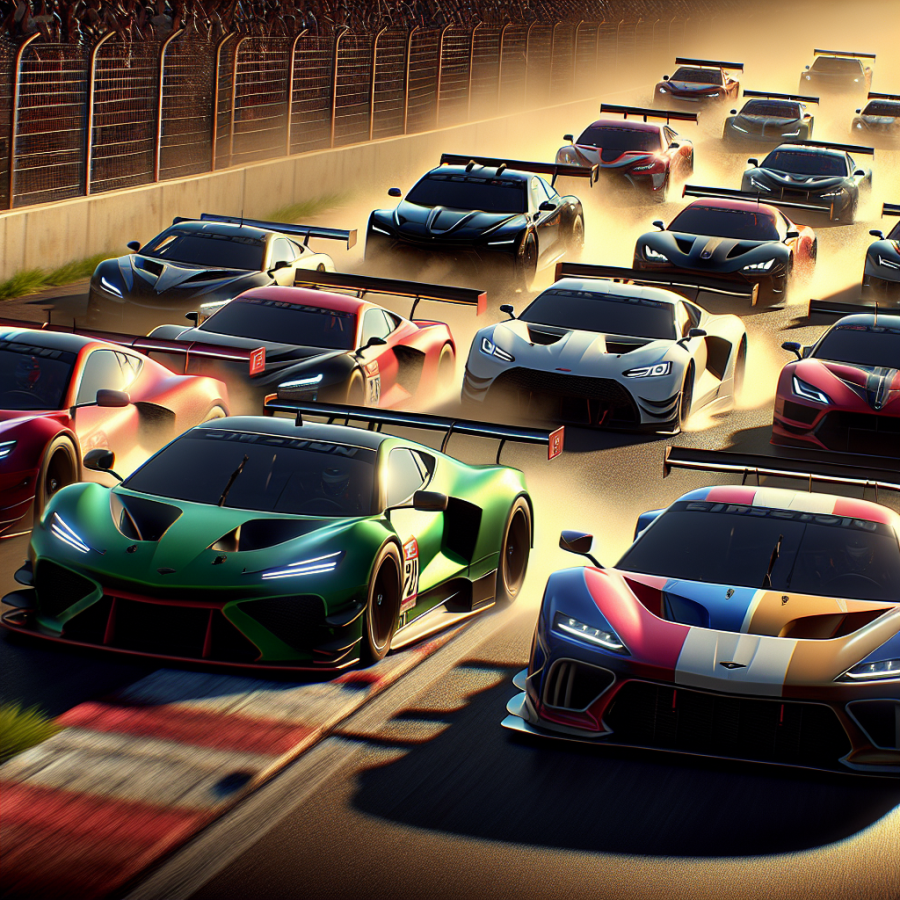The Adrenaline Rush: Understanding the Allure of Auto Racing
Auto racing is a sport that captures the hearts of millions. It's the roar of the engines, the smell of rubber and petrol, and the sight of sleek machines cutting through the air at breakneck speeds that create a symphony of sensory experiences for both drivers and fans. This allure is not just about the race day excitement; it's a complex tapestry woven from aspects of technology, teamwork, strategy, and the raw human desire to push boundaries.
One fundamental component of auto racing's attractiveness is the adrenaline rush it provides. Adrenaline is a hormone that kicks in during moments of high stress or excitement, preparing our bodies for a 'fight or flight' response. In the context of auto racing, this biological reaction heightens the drivers' senses and reflexes, crucial for navigating the track at high speeds while maintaining control of the vehicle.
The adrenaline rush extends to the audience as well. Spectators are on the edge of their seats as they watch drivers performing daring overtakes or navigating through a pack of cars at speeds upwards of 200 mph. This shared excitement creates a community atmosphere that is palpable in the air around the racetrack or even through a screen for those watching at home.
Delving deeper, the technological mastery behind auto racing is another factor that feeds into the allure. Racing teams spend countless hours and enormous resources to craft machines that push the envelope of what is mechanically possible. The interplay between man and machine reaches its pinnacle on the racetrack, where engineering marvels are put to the ultimate test. This fusion of human skill and advanced technology is a key ingredient in the recipe for the spellbinding appeal of auto racing.
Furthermore, auto racing carries a spirit of competition that speaks to fundamental human instincts. It's not just a race against other drivers, but also a race against time and the limits of physical capabilities. Every millisecond counts, and the pursuit of perfection is relentless. This environment fosters a breed of athletes who are not only physically skilled but also mentally sharp, capable of making split-second decisions that could mean the difference between victory and defeat.
Team strategy also plays a critical role in the sport, making it more than just a singular pursuit of speed. From pit-stop tactics to fuel management and tire choices, there is a deep layer of strategic planning that goes into each race.
Read also:
Galloping to Glory: The Thrill of Equestrian Competitions
Inside the Fast Lane: Exploring the Fascinating Dynamics of Motorsport
The sun-baked asphalt, the roar of engines, the blur of speeding vehicles, and the unyielding pressure on drivers and teams alike—all form the adrenaline-pumping world of motorsport. Beneath the romance of speed and competition lies a complex framework, rich with technical innovation, strategic brilliance, and a relentless drive for efficiency. To truly appreciate the essence of auto racing, one must peer into the intricacies that make up its core.
One of the most critical dimensions of motorsport is the technological arms race. In series such as Formula One, engineers push the boundaries of physics, crafting vehicles that are marvels of modern engineering. Each component of a race car, from aerodynamics to the powertrain, is optimized for maximum performance. Aerodynamic features are meticulously designed to manage air flow, reduce drag, and increase downforce, thus keeping the car glued to the track at high speeds.
However, winning isn't solely dependent on car specifications. At the heart of each vehicle is the driver, whose skill and instincts are instrumental. It is the driver's capacity to extract the most from their machine while managing tire wear, fuel load, and interpreting the behavior of competitors that can make the difference between victory and defeat. A split-second decision on whether to overtake, pit, or strategically yield position can alter the course of an entire race.
Tactics play a significant role in motorsport. Teams must develop comprehensive race strategies that anticipate various scenarios and adapt to the evolving conditions of an event. Whether it's choosing the ideal moment for a pit stop or deciding on the optimal tire strategy for weather conditions, this planning can be as pivotal as the performance of the vehicle itself.
Moreover, the symbiotic relationship between driver and pit crew is vital. The pit crew performs under immense pressure, executing tire changes and mechanical adjustments at lightning speeds during pit stops. Their efficiency can determine a race outcome, and their coordination and practice routine are akin to a well-rehearsed ballet performed in the midst of chaos.
Intense, high-stakes competition is another core aspect of motorsport dynamics. Every point, every position, and every second counts. Championships can be won or lost by the slimmest of margins. In such a competitive environment, psychological endurance is as important as physical stamina. Drivers must maintain focus amid the extreme G-forces and intense concentration required to navigate tracks at breakneck speeds without error.
Finally, the integral component binding all aspects of motorsport together is safety.




